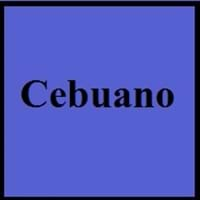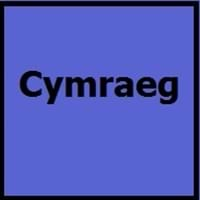Cebuano and Welsh
Countries
Philippines
Wales
National Language
Philippines
Wales
Second Language
Philippines
Not spoken in any of the countries
Speaking Continents
Asia
Europe
Minority Language
Not spoken in any of the countries
Argentina, United Kingdom
Regulated By
Visayan Academy of Arts and Letters
Welsh Language Commissioner
Interesting Facts
- About one-fifth of the population of the philippines speak cebuano and are second largest ethnolinguistic group in the country.
- Cebuano contains many words of Spanish origin.
- One of the Celtic language still spoken with great numbers of speakers is Welsh language.
- Welsh was evolved from British , which was spoken by ancient Britons.
Similar To
Hiligaynon Language
English Language
Derived From
Island of Cebu
British Language
Alphabets in
Cebuano-Alphabets.jpg#200
Welsh-Alphabets.jpg#200
Writing Direction
Not Available
Not Available
How Are You?
Kumusta man ka?
Sut ydych chi?
Good Night
Maayong Gabii
Nos da
Good Evening
Maayong Gabii
Noswaith dda
Good Afternoon
Maayong Hapon
P'nawn da
Good Morning
Maayong Buntag
Bore da
Please
Palihug
os gwelwch yn dda
Sorry
Ikasubo ko
Mae'n ddrwg gennym
I Love You
Gihigugma ko ikaw
Dw i'n dy garu di
Excuse Me
Ekskyus mi
Esgusodwch fi
Dialect 1
Boholano
Patagonian Welsh
Where They Speak
Bohol
Argentina
How Many People Speak
Not Available
Dialect 2
Southern Kana
Y Wyndodeg
Where They Speak
southern Leyte
Gwynedd
Dialect 3
North Kana
Y Bowyseg
Where They Speak
northern part of Leyte
Powys
How Many People Speak?
Not Available
Speaking Population
Not Available
Second Language Speakers
Not Available
Native Name
Visayan
Cymraeg / Y Gymraeg
Alternative Names
Binisaya, Bisayan, Sebuano, Sugbuanon, Sugbuhanon, Visayan
Cymraeg
French Name
cebuano
gallois
German Name
Cebuano
Kymrisch
Pronunciation
Not Available
[kəmˈrɑːɨɡ]
Ethnicity
Cebuano people
Welsh people
Origin
16th century
9th Century
Language Family
Austronesian Family
Indo-European Family
Subgroup
Not Available
Celtic
Branch
Not Available
Brythonic
Early Forms
No early forms
Common Brittonic, Old Welsh, Middle Welsh
Standard Forms
Standard Cebuano
Welsh
Language Position
Not Available
Signed Forms
Not Available
Not Available
Scope
Individual
Individual
ISO 639 1
No data Available
cy
ISO 639 6
Not Available
Not Available
Glottocode
cebu1242
wels1247
Linguasphere
No data Available
50-ABA
Language Type
Living
Historical
Language Linguistic Typology
Verb-Subject-Object
Verb-Subject-Object
Language Morphological Typology
Not Available
Fusional
All Cebuano and Welsh Dialects
Most languages have dialects where each dialect differ from other dialect with respect to grammar and vocabulary. Here you will get to know all Cebuano and Welsh dialects. Various dialects of Cebuano and Welsh language differ in their pronunciations and words. Dialects of Cebuano are spoken in different Cebuano Speaking Countries whereas Welsh Dialects are spoken in different Welsh speaking countries. Also the number of people speaking Cebuano vs Welsh Dialects varies from few thousands to many millions. Some of the Cebuano dialects include: Boholano, Southern Kana. Welsh dialects include: Patagonian Welsh , Y Wyndodeg. Also learn about dialects in South American Languages and North American Languages.
Cebuano and Welsh Speaking population
Cebuano and Welsh speaking population is one of the factors based on which Cebuano and Welsh languages can be compared. The total count of Cebuano and Welsh Speaking population in percentage is also given. The percentage of people speaking Cebuano language is 0.32 % whereas the percentage of people speaking Welsh language is Not Available. When we compare the speaking population of any two languages we get to know which of two languages is more popular. Find more details about how many people speak Cebuano and Welsh on Cebuano vs Welsh where you will get native speakers, speaking population in percentage and native names.
Cebuano and Welsh Language Codes
Cebuano and Welsh language codes are used in those applications where using language names are tedious. Cebuano and Welsh Language Codes include all the international language codes, glottocodes and linguasphere.





